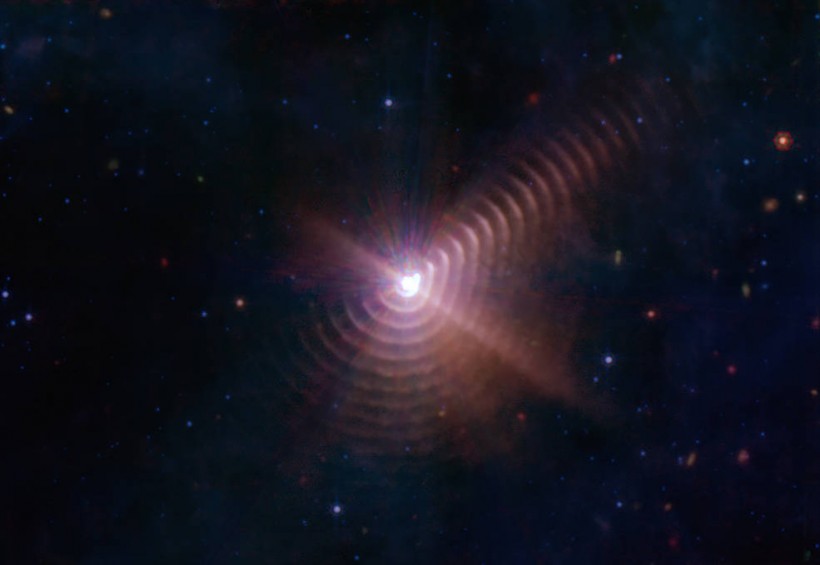NASA's James Webb Space Telescope discovered a new space phenomenon in the great beyond, and it is the formation of rings over 130 years, appearing 5,000 light years away from the planet. The WR 140 is collectively a duo of stars in a system, where one is active and energetic to release hydrogen and other elements, thought to be the reason for the dust rings.
The famed space agency relates the dust rings to fingerprints, forming concentric circles around the stars.
NASA Webb Telescope Discovers Dust Rings on WR 140

(Photo : NASA, ESA, CSA, STScI, JPL-Caltech)
NASA reported that the James Webb Space Telescope shared a new image that delivers on its recent discovery of "fingerprint" dust rings found in the WR 140 system. The pair of stars created 17 concentric dust rings around it, and these may look like light flashes or streaks only, but these rings are there to stay.
The system is made up of two stars, one with the O-type star which is known to be the hottest star and the most gigantic there is, while the other is a Wolf-Rayet known for its active and energetic characteristics.
Researchers published a study that relays the information and data they generated from the study, recently uploaded to Nature's publication.
Read Also: MIT Says NASA James Webb May Be Too Advanced; Experts Claim Data Misinterpretation Might Happen
What Caused the Formation of these Dust Rings?
This powerful duo of stars releases powerful winds which include particles and elements, and when their bursts interact, they transform it into dust particles which contributed to the fingerprint rings' formation. The dust rings are unique to the WR 140 system, as it is common for stars to eject winds and dust from their activities.
NASA James Webb's Discoveries
The James Webb Space Telescope is regarded to be one of the most advanced technologies for surveying the cosmic heavens, focusing on deep space and learning more about what is around us. Webb's first significant contribution was capturing the "deepest" image of the universe, showing its diverse contents that were never seen before.
Webb helped a lot in modernizing space discoveries and studies, contributing to many fields of study that needs discovering, as well as investigating anomalies for astronomers to interpret.
The famed space telescope is also fond of rings, as it captured Neptune's rings, and gave the public more information and context to previous discoveries on the planet. Voyager 2's 1989 photo was the first to show Neptune's rings, but the Webb telescope helped give humans more to see and know about what surrounds the last gas planet in the system.
Stars are peculiar objects as these are formations of pure energy and power, with the evident one being the Sun, the most enormous star in the system. Webb's recent discovery helps further knowledge on the stars present in the galaxy, and it also gives more information about their capabilities and activities which form new objects, like these dust rings.
Related Article: NASA's James Webb Telescope Is Capturing A 'Treasure Trove of Record-Breaking Distant Galaxies'
This article is owned by TechTimes
Written by Isaiah Richard





